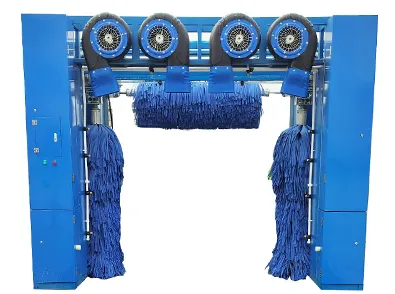
- Afrikaans
- Albanian
- Amharic
- Arabic
- Armenian
- Azerbaijani
- Basque
- Belarusian
- Bengali
- Bosnian
- Bulgarian
- Catalan
- Cebuano
- Corsican
- Croatian
- Czech
- Danish
- Dutch
- English
- Esperanto
- Estonian
- Finnish
- French
- Frisian
- Galician
- Georgian
- German
- Greek
- Gujarati
- Haitian Creole
- hausa
- hawaiian
- Hebrew
- Hindi
- Miao
- Hungarian
- Icelandic
- igbo
- Indonesian
- irish
- Italian
- Japanese
- Javanese
- Kannada
- kazakh
- Khmer
- Rwandese
- Korean
- Kurdish
- Kyrgyz
- Lao
- Latin
- Latvian
- Lithuanian
- Luxembourgish
- Macedonian
- Malgashi
- Malay
- Malayalam
- Maltese
- Maori
- Marathi
- Mongolian
- Myanmar
- Nepali
- Norwegian
- Norwegian
- Occitan
- Pashto
- Persian
- Polish
- Portuguese
- Punjabi
- Romanian
- Russian
- Samoan
- Scottish Gaelic
- Serbian
- Sesotho
- Shona
- Sindhi
- Sinhala
- Slovak
- Slovenian
- Somali
- Spanish
- Sundanese
- Swahili
- Swedish
- Tagalog
- Tajik
- Tamil
- Tatar
- Telugu
- Thai
- Turkish
- Turkmen
- Ukrainian
- Urdu
- Uighur
- Uzbek
- Vietnamese
- Welsh
- Bantu
- Yiddish
- Yoruba
good psi for car pressure washer
Understanding Good PSI for Car Pressure Washers
When it comes to cleaning your car, a pressure washer can be an incredibly effective tool. Its ability to blast away dirt, grime, and stubborn stains makes it a favorite among car enthusiasts and casual users alike. However, choosing the right pressure washer with the appropriate PSI (pounds per square inch) is crucial to ensure effective cleaning without damaging your vehicle's surface. This article will guide you through understanding the good PSI ranges for car pressure washers and how to use them correctly.
What is PSI?
PSI, or pounds per square inch, is a measure of the pressure exerted by the water coming out of the pressure washer nozzle. In the context of car washing, different PSI levels can impact how effectively you can clean your vehicle without risking damage to its paint or delicate components. It’s important to find a balance between sufficient cleaning power and safety for your car’s finish.
Ideal PSI Range for Car Washing
For most consumer-grade pressure washers used for car cleaning, a PSI range of 1200 to 1900 is generally recommended. Here’s a breakdown of why this range is ideal
- 1200-1500 PSI This range is typically safe for use on all vehicle surfaces. It is effective in removing common dirt, mud, and light stains without the risk of damaging the paintwork or causing chips. If you have a vehicle with delicate paint or an older car, this lower PSI range will help maintain its finish.
- 1500-1900 PSI This range provides a bit more power and may be suitable for removing more stubborn grime and tougher stains. It can effectively clean the undercarriage or wheels of the car, which often require a stronger blast to remove built-up dirt. However, caution is advised, especially on sensitive areas like painted surfaces and plastic trims.
- Above 1900 PSI While higher PSI levels might seem appealing for tougher cleaning tasks, they can pose a significant risk of damaging your vehicle’s paint, especially if the nozzle is held too close to the surface. It’s generally advisable to avoid using pressure washers above 1900 PSI for car detailing.
Choosing the Right Nozzle
In addition to PSI, the nozzle type also plays a crucial role in how the pressure is applied. Most pressure washers come with interchangeable nozzles that vary in spray pattern and intensity
good psi for car pressure washer

- Zero-degree nozzle Provides a concentrated stream of water, ideal for tough, stubborn stains but can be damaging if used too close.
- 15-degree nozzle Offers a powerful spray that’s effective for grime but should be used with caution on car paint
.- 25-degree nozzle This is generally safe for washing cars and is effective for most cleaning tasks.
- 40-degree nozzle The gentlest spray, perfect for washing delicate surfaces.
Best Practices for Car Washing with a Pressure Washer
1. Preparation Before using a pressure washer, ensure the car's surface is free of loose debris and dirt. This helps prevent scratching during the wash.
2. Distance Maintain a safe distance (at least 2 feet) between the nozzle and the car's surface to prevent damage.
3. Technique Use even, sweeping motions while applying the pressure washer to ensure thorough cleaning without concentrating power on one area.
4. Rinse and Dry After washing, make sure to rinse the car well to remove any soap residue, and dry it with a microfiber cloth to prevent water spots.
Conclusion
Using a pressure washer for car cleaning can save time and effort when done correctly. By understanding the appropriate PSI ranges and selecting the right nozzles, you can ensure a clean finish without compromising your vehicle’s integrity. Always prioritize safety and care when handling high-pressure equipment, and your car will thank you for it!
-
Integrating Aqua Tunnel Car Wash in Shopping CentersNewsJun.24,2025
-
Gas Station with an Auto Car Wash MachineNewsJun.24,2025
-
Efficiency in Your Aqua Tunnel Car Wash: Power & Water-SavingNewsJun.24,2025
-
Car Wash Business with Advanced Auto Car Cleaning MachinesNewsJun.24,2025
-
Balancing Setup Costs with Aqua Tunnel Car WashNewsJun.24,2025
-
Aqua Tunnel Car Wash: Eco-Design for the Energy-Savvy EntrepreneurNewsJun.24,2025



